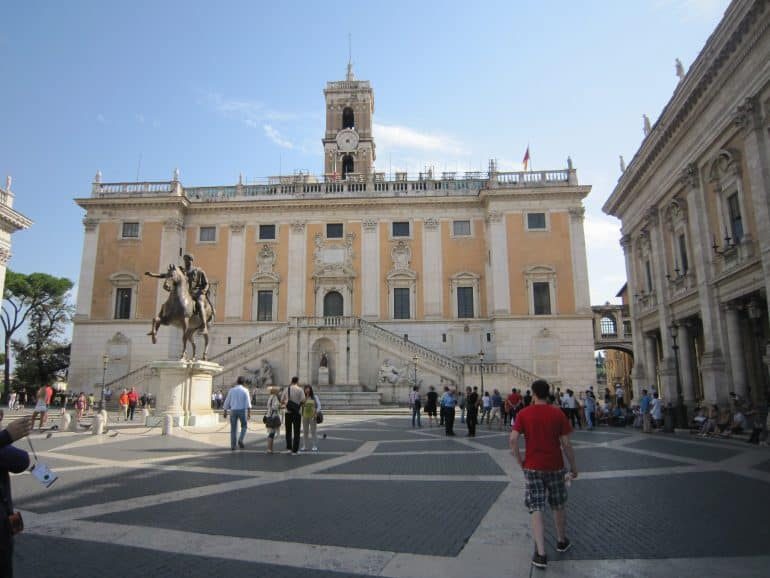Discover the Antiquities Housed in Rome’s Capitoline Museums
Since the Early Iron Age, the Capitoline Hill, or the Campidoglio, has cultivated cultural, civic, and artistic advancements through its many transformations. From an ancient grave site, to the seat of pagan religion and Papal authority, to a political center, and to the location of the Capitoline Museums, the hill is layered with rich history, now showcased in the Musei Capitolini’s antiquities collections.
Buy your ticket or book your tour for the Capitoline Museums


By the commission of Pope Paul III in the mid-16th century, Michelangelo renovated two palaces and designed a third, creating the Piazza del Campidoglio that modern museum-goers experience. The Capitoline Museums occupy two of the palaces, Palazzo dei Conservatori and Palazzo Nuovo, which face each other and the equestrian statue of Marcus Aurelius that stands between them. Behind the statue is the Palazzo Senatori, a building uninvolved with the museum, but crucial in creating the piazza’s symmetrical elegance. An interlaced twelve-point star covers the piazza and welcomes visitors who have just walked up the Cordonata, illustrating their arrival to the center of the world. Visitors can then enter the Palazzo dei Conservatori, the building to the right of the Marcus Aurelius statue, to begin their tour inside the world’s first public museum.
Palazzo dei Conservatori
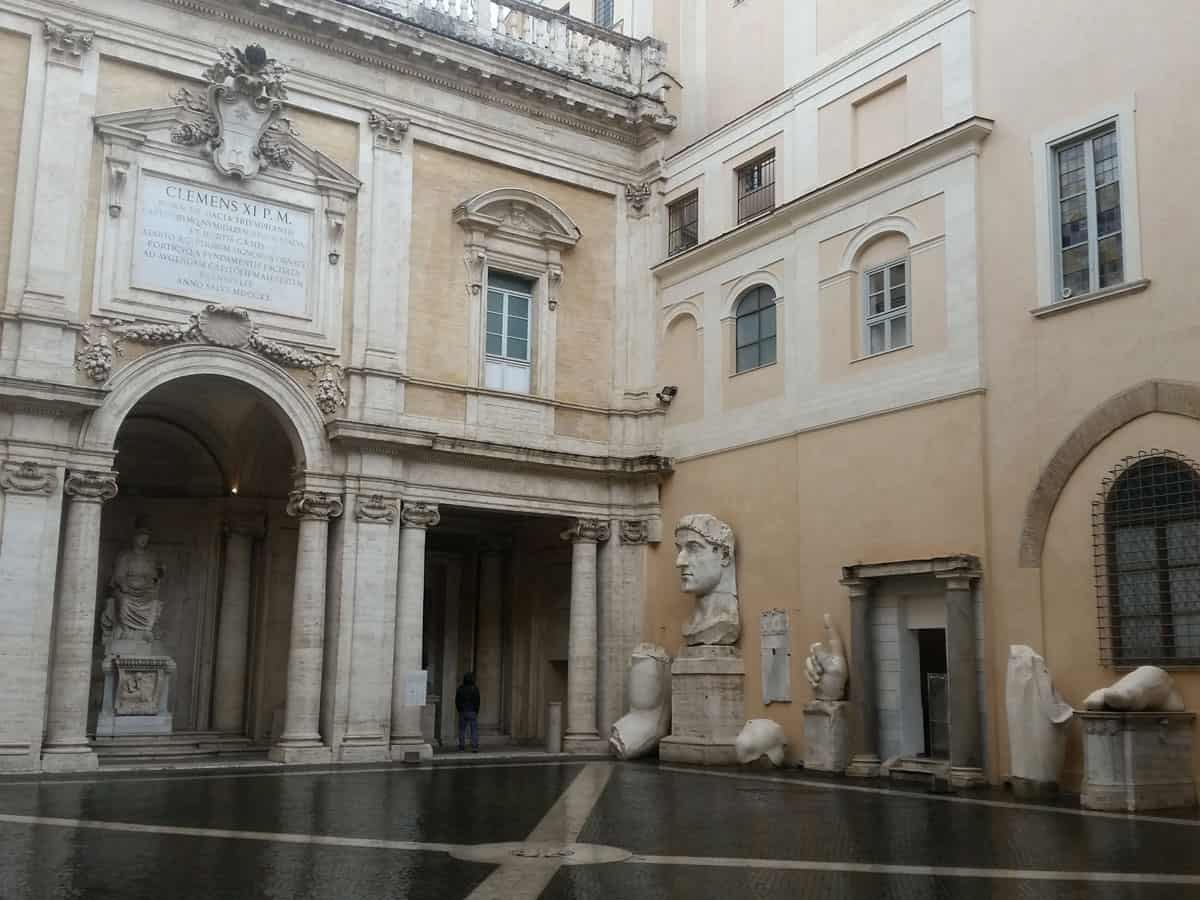
Constructed between the mid-15th and 16th centuries for Rome’s magistrates, the Palazzo dei Conservatori now contains the museums’ entrance, administrators’ apartment, exedra of Marcus Aurelius, and Capitoline picture gallery. Upon entering the courtyard, marble fragments of the Colossus of Constantine pull viewers’ eyes to an idealized face with upward gazing eyes, calloused toes, forearms bulging with veins, and shining kneecaps and shins. The rest of the body, constructed with brick and wood, once rested inside the Basilica of Maxentius in the Forum, but was pillaged in Late Antiquity for some bronze body parts. Michelangelo brought the marble fragments to the palazzo’s courtyard when he was designing the site, where they remain as a fascinating and jarring introduction to the Capitoline museums.
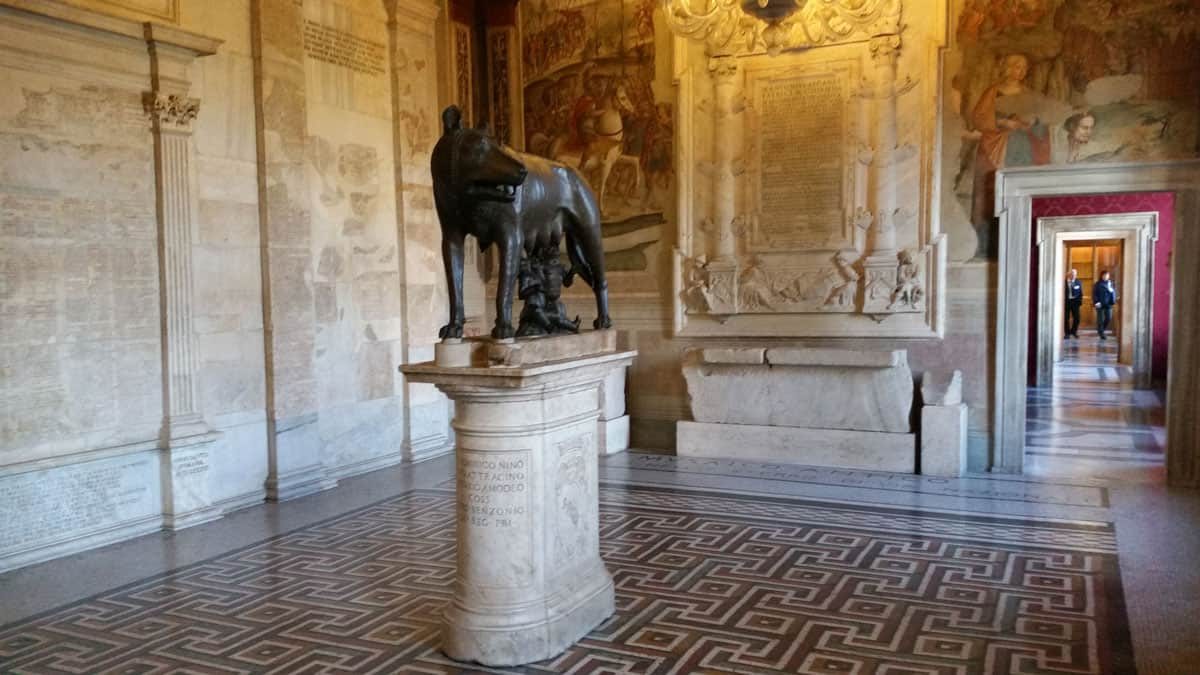
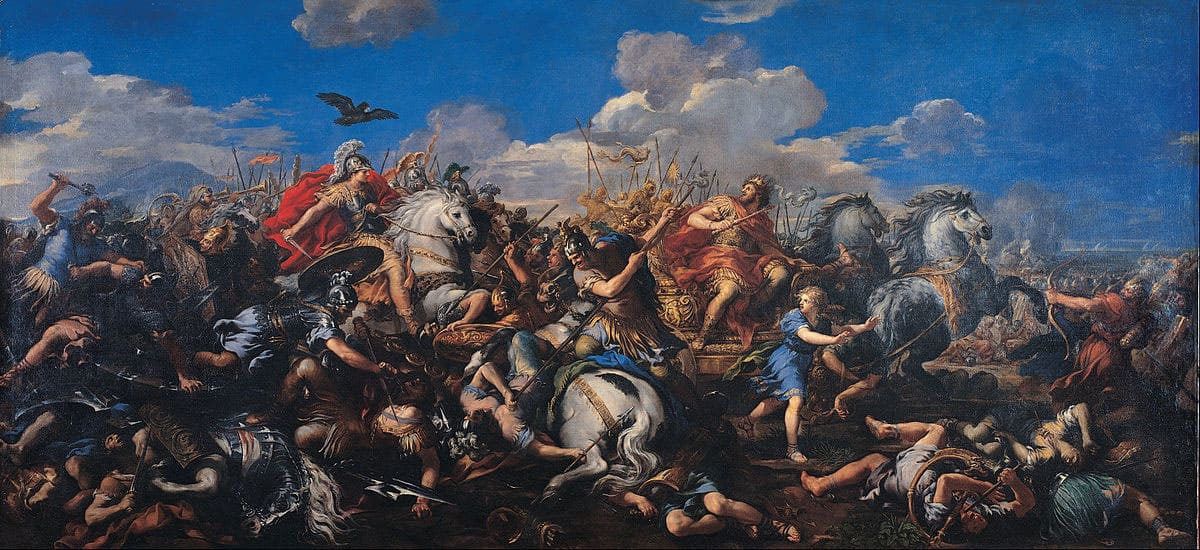
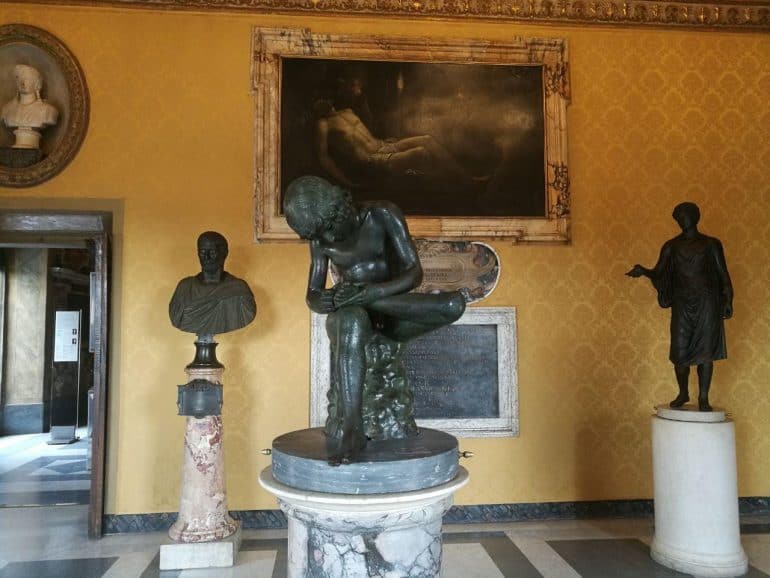
The first floor features the apartment of the magistrates, a series of halls housing enormous frescoes and tapestries, theatrical masks, bronze statues, marble busts, and coffered ceilings. Besides the frescoes’ boggling sizes, they also overwhelm you with their vivid, historical depictions of scenes like, The Justice of Brutus, the Rape of the Sabine Women, and Romulus Plows the Boundary Line Around the Future City of Rome. Also housed in the apartment are several of the bronze statues that Pope Sixtus IV donated from the Lateran in 1471, the defining act that subsequently created the Capitoline Museums. Many tour groups and individuals also surround the She-Wolf and Spinario statues, two popular attractions in the palazzo that emphasize the museum’s historical connection to Rome and appreciation of fine art.
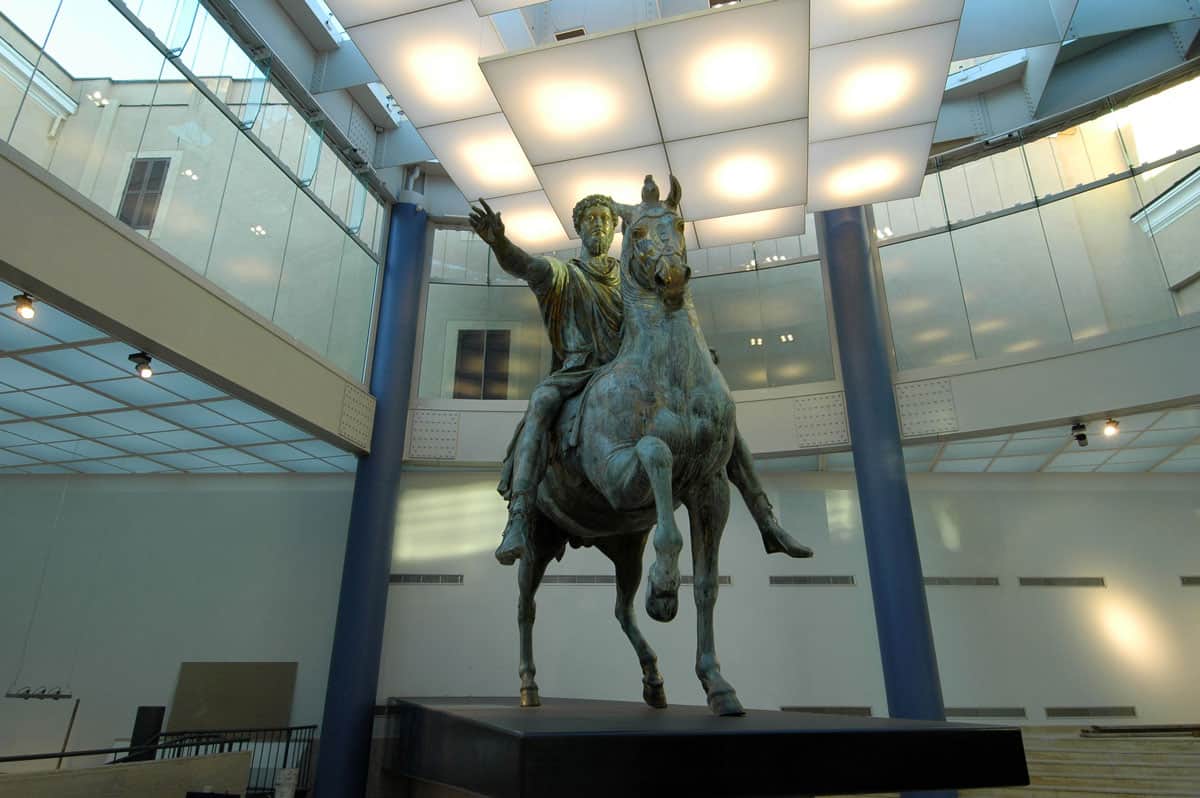
Even after the apartment’s magnificent frescoes and bronze statues, more sculptures and archeological artifacts amaze novice and seasoned visitors alike. The marble bust of emperor Commodus (Marcus Aurelius’s son) dressed as Hercules and a bronze-gilded statue of the hero himself await visitors’ awe. Along with the colossal statue of Hercules, inside the old “Roman Garden,” stands the original equestrian statue of Marcus Aurelius. The statue in the Campidoglio’s piazza was a replica built to endure the exposure to Rome’s weather. Standing in a bright, airy room, the statue emanates the regal status of both Marcus Aurelius and of Rome.
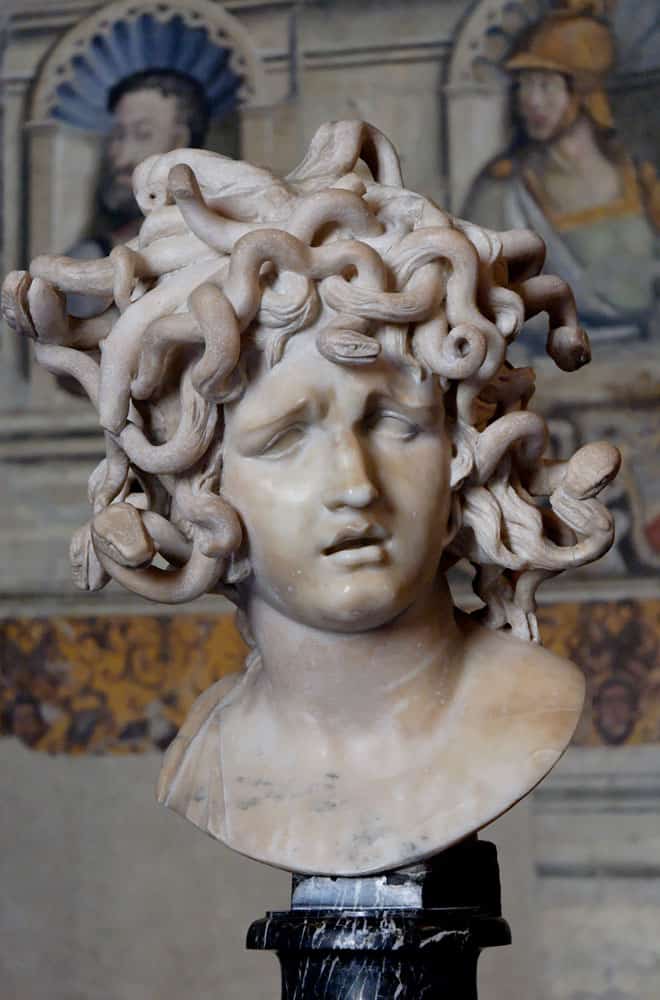
Bordering the exedra is the area of the Temple of Jupiter Optimus Maximus Capitolinus, a temple dedicated to Jupiter, Juno, and Minerva. The area features detailed visual displays of the area’s transformation over thousands of years as well as artifacts from archeological excavations of the Roman Garden. Ancient pottery, graves, and even preserved food offerings have dated the origin of the Campidoglio village to the Middle Bronze Age (17th-14th centuries B.C.), showing that the importance of the Campidoglio begins long before Michelangelo designed its modern piazza.
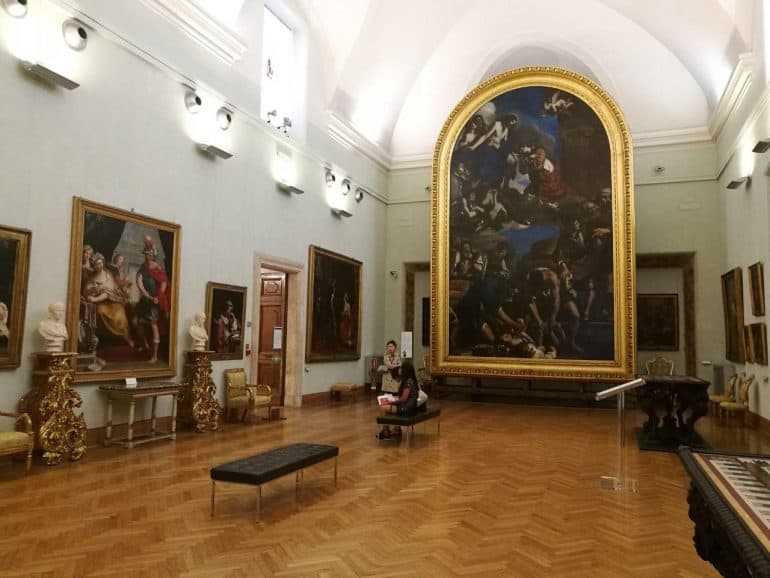
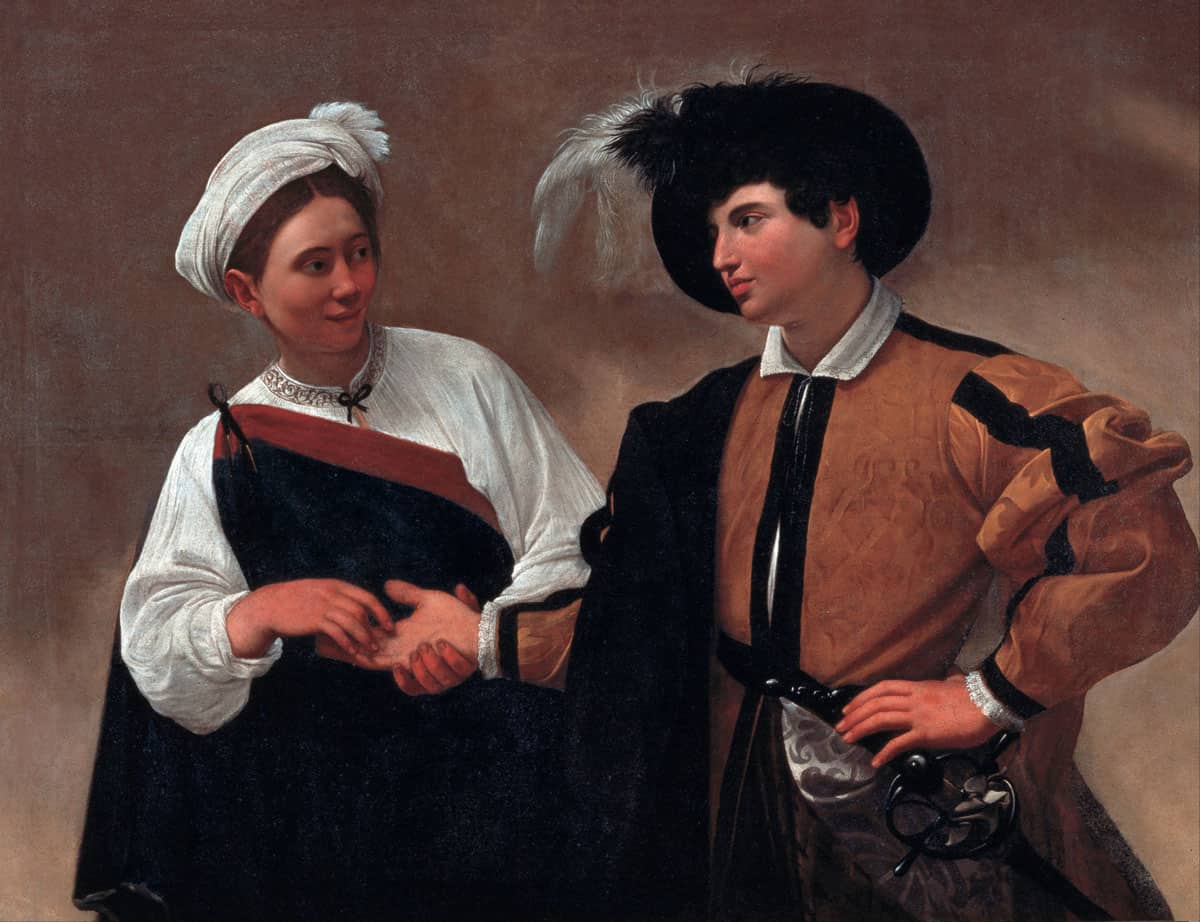
Before descending to the epigraphic gallery, museumgoers should explore the Capitoline Art Gallery on the second floor, the oldest public collection of paintings that originally included 300 works. The Gallery includes nine rooms of masterpieces by Caravaggio, Rubens, and Tiziano, detailed tapestries, and Oriental and European porcelain works. The gallery unfolds in chronological and historical order, spanning from Italian painters from the Middle Ages to Renaissance artists.
Epigraphic Gallery and View of Roman Forum
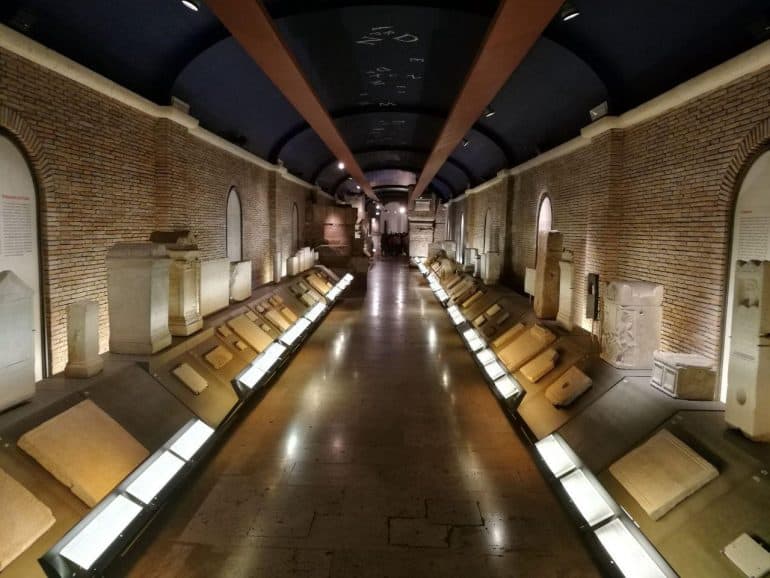
Before witnessing one of the greatest views of the Roman Forum, visitors pass the palazzo’s epigraphic gallery, an underground hall dug in the 1930’s and 1940’s between the Palazzo dei Conservatori, Palazzo Senatori, and Palazzo Nuovo. During the construction, workers discovered inscribed archeological objects that have given a new light to public and private life in ancient Rome.Assembled in the 1950’s, the collection contains various types of monuments related to burials, cult worships, table games, legal decrees, aqueducts, the aristocracy, and army. The hall meets a staircase, leading tourists to an ancient stone structure that housed state archives and connects the Capitoline Hill’s two peaks. The Tabularium’s terrace then gives visitors a breath of fresh air and an extraordinary view of the Roman Forum.
INSPIRATION
Must See Museums in Rome
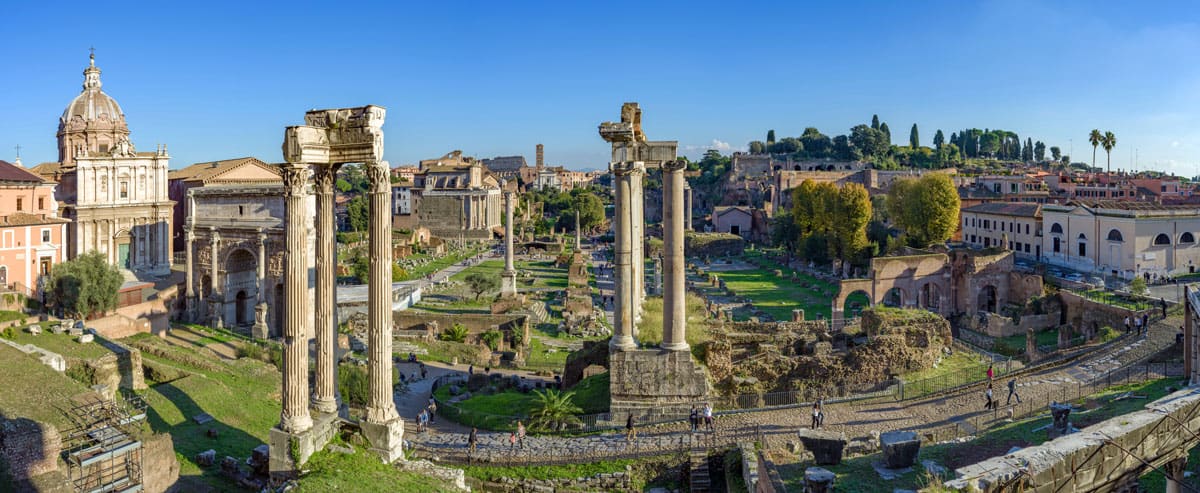
Palazzo Nuovo
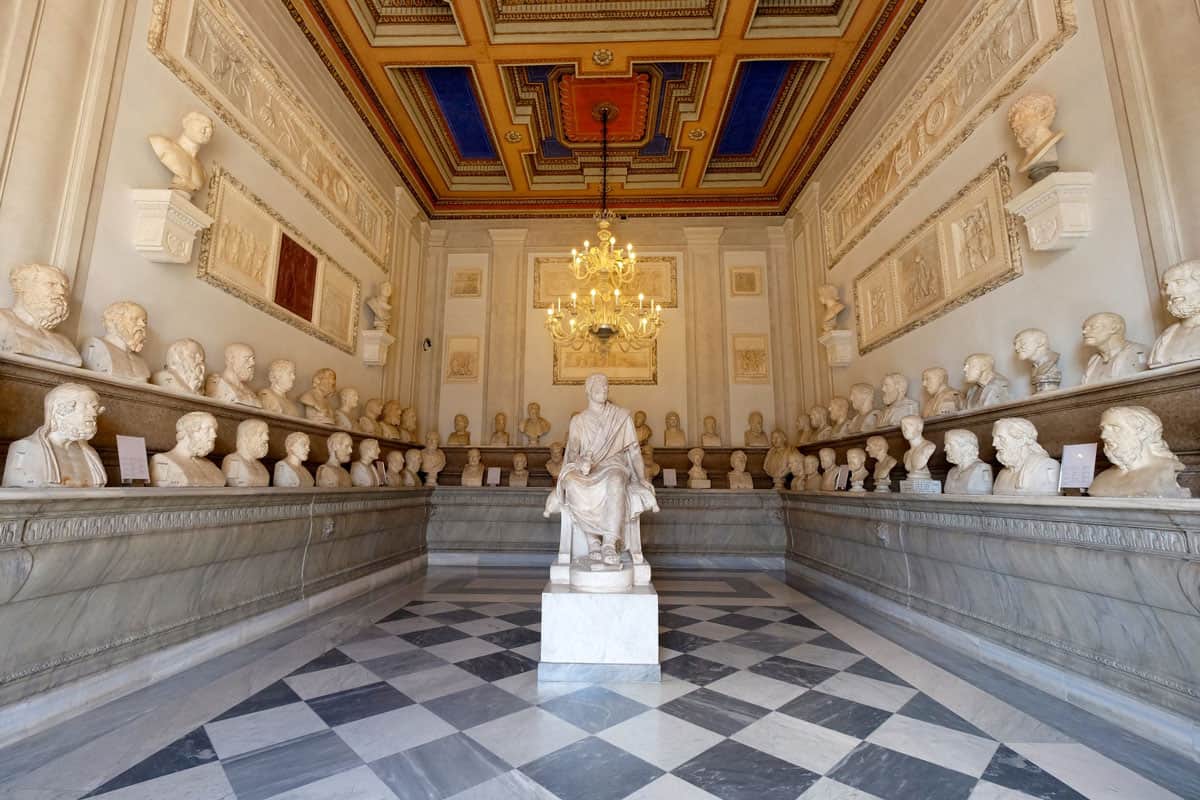
Following the epigraphic gallery, collections of marble sculptures, sarcophagi, and busts spill into the “New Palace.” Built between 1603 and 1674, the construction followed Michelangelo’s blueprint that he created a century earlier. In 1733, Pope Clement XII purchased 418 sculptures for the Capitoline collection, which joined other works that the Palazzo dei Conservatori could not hold. The donation and existence of these sculptures inside the Palazzo Nuovo officially opened the Capitoline Museums in 1734, establishing it as the world’s oldest public museum.
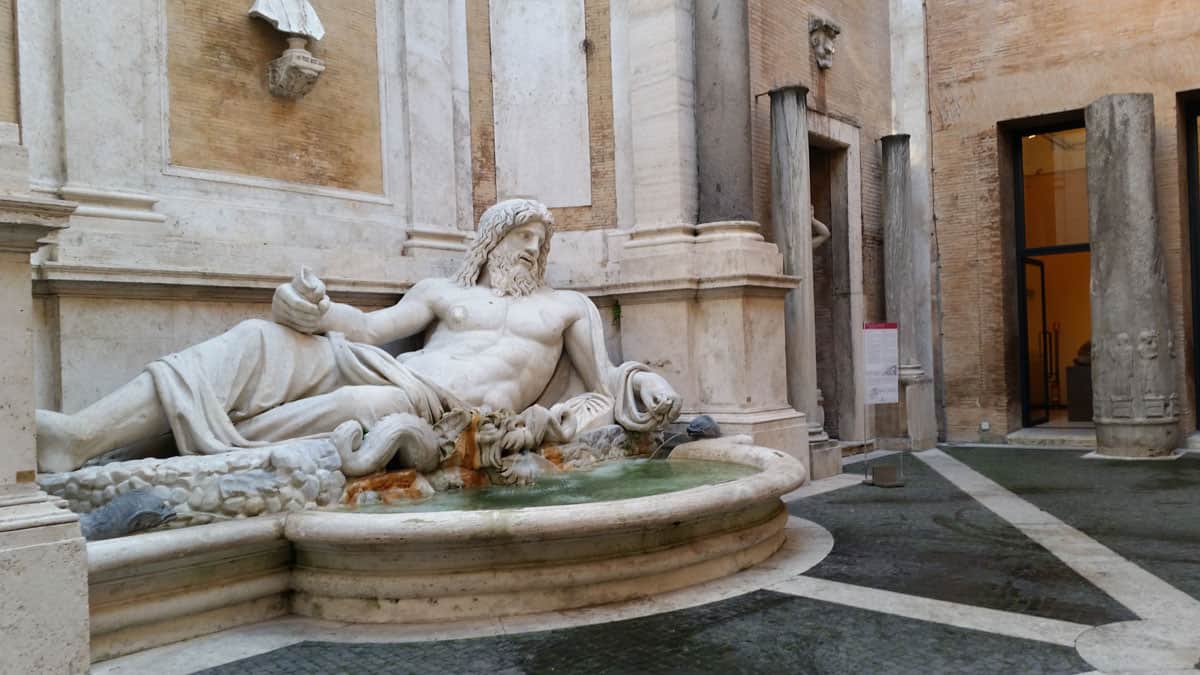
Similarly to the Palazzo dei Conservatori, tourists enter a courtyard with colossal statues. The Marforio statue (from the Forum of Mars) shows Oceanus, god of all the world’s waters, reclining at the courtyard’s foundation. The twenty-foot long statue was once a “talking statue,” a sculpture on which citizens would write anonymous complaints against authorities, but now rests inside the Palazzo Nuovo as one of its most impressive works.
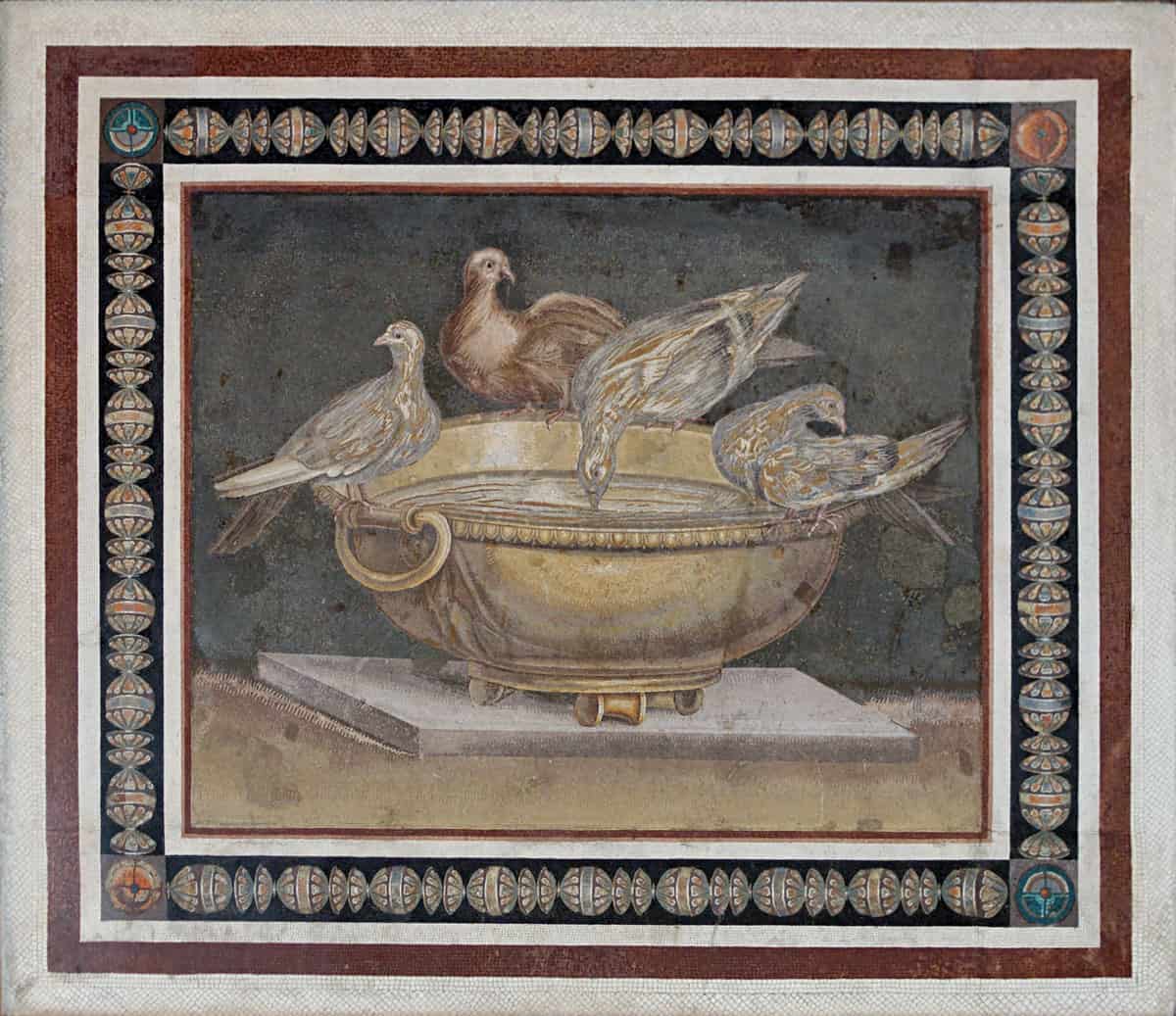
The first floor of Palazzo Nuovo features over 100 sculptures of deities and mythic characters that are still arranged as marquis Alessandro Gregorio Capponi originally installed them in 1734. Grouped by themes or decorative function, visitors explore various rooms like the Hall of Philosophers, Hall of the Emperors, and Hall of the Doves. This room owes its name to one of the two mosaics herein exhibited, found in Hadrian’s Villa at Tivoli.
Some notable sculptures in the Gallery include the sensuous Capitoline Venus, modeled from the original work by Praxiteles. Art lovers will also be stopped by The Infant Hercules Strangling Two Snakes and Leda and the Swan, two myths beautifully captured in stone.
The Reconstruction of the Colossus of Constantine
The recreation of the impressive Colossal Statue is on display in the garden of Villa Caffarelli, part of Rome’s Capitoline Museums, from 6 February 2024.
This is an exact replica of the original colossal statue of Constantine that was constructed in the early 4th century. Of the ancient statue only a few marble fragments remain ( the head, right arm, wrist, right hand, right knee, right shin, right foot, left foot), but from these materials experts have recreated the sculpture to its exact dimensions.
Read more about the Colossus of ConstantinePiazza del Campidoglio, 1
Monday – Sunday from 9.30am – 7.30pm
Entry fee: €11-13
www.museicapitolini.org


